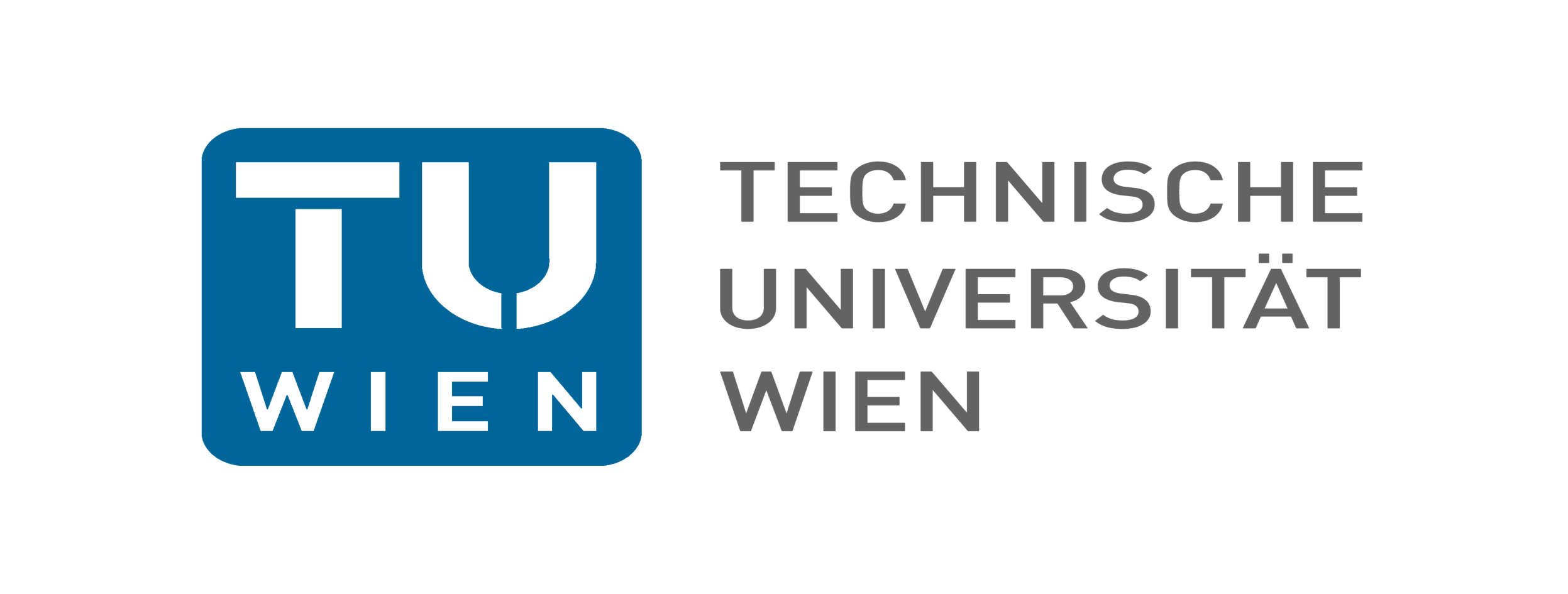Joint Theory Seminar
Tuesday 14:00-15:00
WS2021
Schedule
back| Date | Title | Speaker | Abstract |
|---|---|---|---|
| 12.10.2021 | Classical dynamics, arrow of time, and the origin of Heisenberg's commutation relations | Detlev Buchholz | Based on the assumption that mechanical systems can be described by Lagrangians and time progresses in a fixed direction, a dynamical C*-algebra is presented for nonrelativistic particles at atomic scales. This algebra is based on the concept of operations and relies exclusively on classical concepts. Nevertheless, it is inherently non-commutative. Without presupposing any quantization scheme, the Heisenberg commutation relations for position and velocity measurements are derived from it. Hilbert space representations of the algebra lead to the conventional framework of quantum mechanics, providing a new look on its foundations. (Joint work with Klaus Fredenhagen). |
| 19.10.2021 | Almost relevant corrections for direct measurements of electron's g-factor | Benjamin Koch | The observable used for the direct measurements of the electron's g factor is revisited. This is done by considering the sub-leading effects of the large magnetic background field and virtual Standard Model processes. We find substantial corrections to the Landau levels of the electron. Implications for the observed magnetic moment and the tension between direct and indirect measurement are discussed. |
| 26.10.2021 | No talk | ||
| 02.11.2021 | No talk | ||
| 09.11.2021 | Relativistic kinetic theory with applications in astrophysics | Paola Rioseco | I will review relativistic kinetic theory and apply it to two phenomena. The first phenomenon is accretion of matter around the Schwarzschild black hole, where we calculated its accretion rate. The second phenomenon concerns the dynamics of the kinetic gas for a thin disk in the equatorial plane of the Kerr black hole. In this case, the so-called mixing phenomenon appears, which causes that the gas configuration relaxes to stationary axisymmetric state. The talk is based on the published papers arXiv:1807.10794 / arXiv:1611.02389. |
| 16.11.2021 | Topological defects and generalised orbifolds | Ingo Runkel | Topological defects in quantum field theory can be understood as a generalised notion of symmetry, where the operation is not required to be invertible. Duality transformations are an important example of this. By considering defects of various dimensions, one is naturally led to more complicated algebraic structures than just groups. So-called 2-groups are a first instance, which arise from invertible defects of codimension 1 and 2. Without invertibility one arrives at so-called "fusion categories”. These structures are already visible in dimension 2, where the field theories are under much better control. I will focus on two-dimensional conformal field theories and show how these higher structures arise. I will explain how one can "gauge" such non-invertible symmetries of 2d CFTs, that is, define a generalised notion of an orbifold. Finally, time permitting, will briefly discuss the corresponding structures in 3d topological field theories. |
| 23.11.2021 | Mirror dual Elliptic fibrations and F-theory | Paul Oehlmann | In this talk we discuss pairs of mirror dual elliptic n-folds. We show that under certain conditions mirror duality can factor into a fiber and base action, which yields mirror dual fibrations. For threefolds this allows us to study two F-theory compactifications where Higgs and tensor branches are exchanged. We give several examples and workout the exact base and fiber dictionary and further study (mirror dual) Higgs and tensor branch transitions. We then apply those those results to compute Higgs branches of 4D, N=2 rank one SCFTs. |
| 30.11.2021 | Rademacher expansion from symplectic symmetries of the Siegel modular form: An N=4 counting story | Martí Rosselló | Single centred 1/4 BPS degeneracies in four-dimensional $N=4$ heterotic string theory are generated by $1/\Phi_{10}$. In this talk, we will demonstrate how its $Sp(2,\mathbb{Z})$ symmetries enable us to develop not only a Rademacher expansion for these degeneracies, but also derive the explicit structure underlying the polar states that feed into the expansion. Our results have important implications for using microscopic data to exactly compute gravity path integrals. |
| 07.12.2021 | Non-Lorentzian Supergravity in Ten Dimensions | Johannes Lahnsteiner | In this talk, I describe recent progress in understanding the background field dynamics of the non-relativistic string theory pioneered by Gomis and Ooguri. Building on earlier developments, I present a non-Lorentzian supergravity theory and explain how it constrains the dynamics of the background fields. Special attention will be given to the exotic geometric structures that arise in this theory. I will compare the results with those coming from beta function calculations. In the final part of my talk, I will comment on non-Lorentzian T-duality and an intriguing relation with double field theory. |
| 14.12.2021 | New analytic method to deal with dissipative systems. Application to the general relativistic Poynting-Robertson effect | Vittorio De Falco | Dissipative systems are usually present in all physical fields (e.g., Kinetic theory of gas, Quantum Mechanics, Astrophysics, Cosmology, String Theory), since they are able to furnish a more realistic description of the phenomenon under study. However, the attained modeling-accurateness is also responsible, most of the time, in loss of existence, smoothness, and symmetries of the solutions, presence of topologically complex structures featuring chaotic behaviour, and difficulties in the numerical integration process. In the literature, several methods have been proposed, going from mathematical to numerical analysis. The “relative drawbacks” of some approaches relies on the fact that they are very targeted for the problem to solve or very technical, involving advanced mathematical concepts. In my talk I present a new analytic method developed in collaboration with Dr. Emmanuele Battista, which configures to be simple in its mathematical formulation and implementation, and of broad application. The genesis of this method takes place when we were aiming at determining the Rayleigh dissipative potential of the general relativistic Poynting-Robertson effect. This is a dissipative system in General Relativity involved in X-ray electromagnetic radiation processes occurring in high-energy astrophysics around compact objects, like black holes and neutron stars, and it is responsible to efficiently remove energy and angular momentum from the bodies affected by the radiation. I will give more details about this effect from a theoretical and astrophysical point of view. Finally, I show how the above-mentioned method applies to this effect and which are the consequences. In the conclusions I analyse the implications of the method and show its future perspectives. This talk is essentially based on the following three papers: [1] De Falco, V.; Battista, E.; Falanga M. ”Lagrangian formulation of the Poynting-Robertson effect”, PRD, 2018, 97, 8 (10.1103/PhysRevD.97.084048) [2] De Falco, V.; Battista, E.; ”Analytical Rayleigh potential for the general relativistic Poynting- Robertson effect”, Europhysics Letters, 2019, 127, 30006 (10.1209/0295-5075/127/30006) [3] De Falco, V.; Battista E., ”Poynting-Roberston effect as a dissipative system in general relativity”, PRD, 2020, 101, 064040 (10.1103/PhysRevD.101.064040) |
| 21.12.2021 | No talk | ||
| 28.12.2021 | No talk | ||
| 04.01.2022 | No talk | ||
| 11.01.2022 | Gravitational waves in Einstein-Cartan theory | Emmanuele Battista | In this seminar, we investigate the topic of gravitational waves in the context of Einstein-Cartan theory by exploiting the Blanchet-Damour formalism. Einstein-Cartan model has been formulated to extend the concepts of general relativity to the microphysical realm in order to establish a connection between gravity and the other fundamental interactions. In this framework, the quantum intrinsic spin carried by elementary particles is described geometrically by means of the torsion tensor, which is defined as the antisymmetric part of the affine connection. On the other hand, the Blanchet-Damour approach has been devised in general relativity to deal with the radiation produced by compact binary systems during their early inspiralling stage. It employs two approximation techniques: the multipolar-post-Minkowskian scheme, which combines a post-Minkowskian algorithm and a multipolar decomposition, and the post-Newtonian method. We show that the Blanchet-Damour pattern can be exploited also in Einstein-Cartan model. This permits solving the so-called gravitational-wave generation problem, which consists in formally relating the asymptotic features of radiative gravitational fields, observed far away from their sources, to the structure and the motion of the sources themselves. The research activity underlying this seminar aims at understanding possible quantum imprints in the propagation of gravitational waves produced by spinning, weakly self-gravitating, slowly moving, and weakly stressed sources within Einstein-Cartan theory. |
| 18.01.2022 | Asymptotic symmetries in Carrollian theories of gravity | Alfredo Pérez | In this talk, asymptotic symmetries in Carrollian gravitational theories in 3+1 space and time dimensions obtained from “magnetic” and “electric” ultrarelativistic contractions of General Relativity are analyzed. In both cases, parity conditions are needed to guarantee a finite symplectic term, in analogy with Einstein gravity. In particular, it is shown that from the point of view of the asymptotic symmetries, the magnetic contraction can be seen as a smooth limit of General Relativity, in contrast to its electric counterpart. |
| 25.01.2022 | Entanglement between matrix degrees of freedom and QFT counterpart of entanglement island | Masanori Hanada | In gauge/gravity duality, matrix degrees of freedom on the QFT side play important roles for the emergent geometry. In this talk, we discuss how the entanglement in the gravity side can be described as the entanglement between matrix degrees of freedom. Our approach is different from 'target-space entanglement' which was proposed recently by several groups. The examples studied include the evaporation of small black hole, to which our approach provides a natural QFT counterpart of the entanglement island behind the horizon. Specifically, we propose that the confined degrees of freedom in the partially-deconfined states are the counterpart of the island. Intuitively, the confined sector consists of D-branes sitting behind the horizon and sourcing the exterior geometry. In the context of ER=EPR conjecture, they play the role of Einstein-Rosen bridge. Our proposal applies to the standard gauge/gravity duality such as AdS5/CFT4 correspondence, and does not require heat bath. This talk is based on work in progress with Vaibhav Gautam, Antal Jevicki and Cheng Peng. |
About
back

The Joint Theory Seminar is currently held online via Zoom.
The Topic of the seminar is recent theoretical research in the areas of mathematical physics, high energy physics, physics of fundamental interactions and particle physics.
The target audience for the talks are PhDs, postdocs and faculty members.
To stay informed please subscribe to our mailing list.
How to participate
Attending
Anyone can attend. To receive the link to the Zoom meeting please contact one of the organizers.
Giving a talk
Contact
backDaniel Grumiller
Associate Prof. Dr.techn.
Black holes and holography
Technische Universität Wien
Stefan Fredenhagen
Univ.-Prof. Dr.
Mathematical physics
University of Vienna
Romain Ruzziconi
Postdoctoral researcher
Black holes and holography
Technische Universität Wien
Emmanuele Battista
Postdoctoral researcher
Mathematical physics
University of Vienna